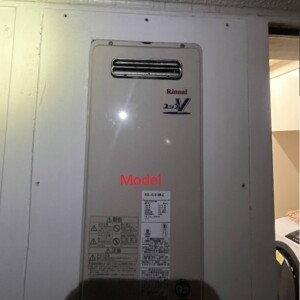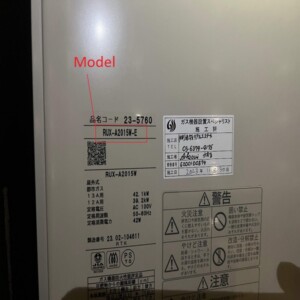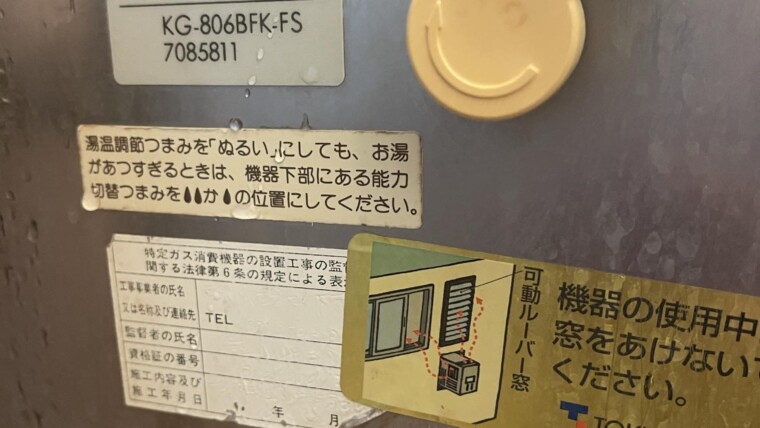Do What If Your Electrical Appliance Is Faulty in Japan? Your Essential DIY Guide
Experiencing a malfunctioning appliance in your home can be incredibly frustrating, especially if you’re living in a new country like Japan. From a cold shower when your water heater fails to an air conditioner refusing to cool during summer, a faulty electrical appliance can disrupt your daily life. If you’re asking yourself, “Do what if your electrical appliance is faulty?” you’re in the right place.
Unlike many other parts of the world, home appliances in Japan often have unique specifications and systems. This includes everything from water heaters, air conditioners, cooktops, lighting fixtures, faucets, and more. Having lived and worked with home repairs in Japan for many years, I’ve gathered valuable experience that I’d like to share. This guide is designed to empower you to handle common issues with your home electrical appliances yourself (DIY – Do-It-Yourself). My hope is that this article will be a useful resource for you. And remember, if you ever need extra support or advice, I’m always here and happy to share my knowledge.
Let’s dive into some fundamental principles that will guide you through the process.
Principle 1: Prioritize Repair or Compatible Replacement – Avoid Construction & Piping Changes
One of the first things to understand about home maintenance in Japan is the cost of professional services, particularly those involving plumbing, electrical wiring, and structural changes. Labor costs here are among the highest globally.
Therefore, a critical principle is to avoid attempting significant alterations to existing piping or undertaking complex construction work yourself unless you have specific expertise. It’s often cost-prohibitive to modify existing systems to fit non-standard appliances. Instead, your first priority should be to see if the faulty appliance can be repaired. If repair isn’t feasible or economical, the next best approach is to replace it with a new unit that is directly compatible with your existing setup. This means finding a model designed to fit the same connections and dimensions as the old one. This principle alone can save you a significant amount of money.
Principle 2: Embrace Online Shopping – Your Wallet Will Thank You
When it comes time to purchase a replacement appliance or even parts for a repair, look no further than online marketplaces. Buying electrical appliances online in Japan offers several distinct advantages:
- Free Delivery: Most major online retailers offer free shipping, often directly to your doorstep, which is incredibly convenient for bulky items.
- Lower Prices: Online prices are frequently significantly lower than those in physical retail stores. The overhead is lower for online shops, and the competition is fierce, driving prices down.
- Selection: You have access to a much wider range of models and brands online than you would in a single store.
The two most reputable and widely used e-commerce platforms in Japan for purchasing home goods are Rakuten and Amazon. Familiarize yourself with these sites – they will become invaluable resources.
Principle 3: Master the Technical Specifications – The Power of Japanese Documentation
Before buying anything, whether it’s a replacement unit or a part, you absolutely must read the technical specifications carefully. This includes checking electrical requirements (voltage, wattage – although within Japan, voltage is standard, wattage can vary), and most importantly, confirming the physical dimensions to ensure the new appliance will fit the existing space and connections.
Fortunately, this process is made remarkably smooth in Japan. Almost all major Japanese manufacturers provide highly accurate and comprehensive technical documentation for their products readily available on their official websites. You can usually find detailed specifications, dimensions, installation requirements, and sometimes even parts lists. This documentation is incredibly reliable and provides all the necessary information for compatibility checks. Do not skip this crucial step!
Principle 4: The Installation Manual is Your Best Friend – Read it Carefully
Once you have your new appliance in hand, resist the urge to immediately start disconnecting wires and pipes. Just like their technical specifications, Japanese manufacturers are world leaders when it comes to the quality and detail of their instruction and installation manuals.
These manuals are meticulously written and often include clear diagrams and step-by-step instructions designed for the user. Reading the installation manual thoroughly before you begin any work is non-negotiable. Every piece of information in the manual is there for a reason and can prevent costly mistakes, damage, or even safety hazards. Trust the manual; it will guide you through the process safely and effectively.
Principle 5: Don’t Be Afraid to Ask for Help – Manufacturers & Experts Are There
If you are new to DIY or find yourself unsure about any part of the process, do not hesitate to seek clarification. Japanese manufacturers typically have customer support lines or email contacts, and they are often willing to answer technical questions about their products.
Furthermore, services like ours are also available to assist. Even if you plan to do the work yourself, getting advice or confirming your understanding before you start can save you a lot of trouble. There’s no shame in asking questions, especially when dealing with electrical or plumbing systems.
Step-by-Step Guide to Dealing with Your Faulty Appliance
Now that we’ve covered the foundational principles, let’s walk through the practical steps when you encounter a faulty electrical appliance.
Step 1: Identify Your Appliance’s Model Number
Your first course of action is to locate the appliance’s identification label. This label is typically found on the unit itself – often on the side, back, bottom, or inside a door or panel. Look for the manufacturer’s name and the specific model number (sometimes called 型番 – kataban). The model number is your key to finding the correct documentation.


Step 2: Consult the Troubleshooting Guide
Once you have the model number, go to the manufacturer’s official website and find the product page or support section for your specific model. Download the user manual (取扱説明書 – toriatsukai setsumeisho). Most manuals have a dedicated section for troubleshooting common problems (よくある質問 – yoku aru shitsumon or トラブルシューティング – toraburu shooting). Read this section carefully and compare the symptoms described to what your appliance is doing. Follow the recommended steps – sometimes the solution is as simple as resetting the unit or cleaning a filter. This is your first and often most effective line of defense.
Step 3: When Replacement is Necessary: Finding the Right Model
If troubleshooting doesn’t resolve the issue, or if the manual indicates a major fault, the appliance may need to be replaced. Using the model number of your old appliance, return to the manufacturer’s website. They often list recommended replacement models or series that are designed to be compatible with existing installations. This is the most reliable way to ensure the new unit will fit and connect correctly. Alternatively, you can contact services like ours, as we maintain extensive databases of past appliance models and their modern equivalents based on years of repair experience.
Step 4: Smart Shopping: Finding the Best Deal Online
Once you have identified one or more compatible replacement models, it’s time to shop. Head to Amazon.co.jp or Rakuten.co.jp. Search for the model numbers you found. Based on my experience, the quality among comparable models from major reputable Japanese manufacturers is generally very similar. Therefore, my tip is usually to look for the best price available. Don’t assume a higher price means better quality for standard appliances from trusted brands. Sometimes, sellers offer surprisingly low prices due to factors like high sales volume or favorable commission structures with manufacturers. Compare prices across different shops on these platforms to find the most economical option.
Step 5: Installation Time: Patience and Precision
When your new appliance arrives, locate the installation manual (工事説明書 – kouji setsumeisho or 設置説明書 – secchi setsumeisho). This manual will detail the step-by-step process for safely removing the old unit and installing the new one. Read and understand every step before you pick up a tool. Take your time. If you are not a professional, rushing can lead to mistakes, damage, or safety hazards. Follow the instructions precisely, referring back to the manual whenever you are unsure. Be meticulous with connections, ensuring they are secure and correct according to the diagrams.
When DIY Isn’t Possible: Professional Help is an Option
While this guide encourages the DIY approach, there are times when professional help is necessary or preferred. If you encounter complex issues, feel uncomfortable working with electrical or plumbing systems, or if your DIY installation attempt is unsuccessful, don’t despair. You can always contact a professional service. For a relatively standard installation of a pre-purchased appliance (like a water heater or air conditioner indoor unit), the labor cost typically ranges from ¥20,000 to ¥30,000. Services like ours are available to help when you need it.
Conclusion: Save Money and Gain Confidence
In today’s increasingly challenging economic climate, finding ways to save money is essential, especially in a country like Japan where service costs are high. Learning to tackle home appliance issues yourself can lead to significant savings. By understanding the unique aspects of Japanese appliances, leveraging online shopping, relying on excellent manufacturer documentation, and proceeding carefully, you can successfully troubleshoot and replace faulty units.
I hope this guide provides you with the confidence and knowledge to tackle your next appliance problem. Remember the principles and steps outlined here. Mastering simple home repairs is a valuable skill that will benefit you greatly while living in Japan.
If you have specific questions, need help identifying a replacement model, or require professional installation assistance, please don’t hesitate to reach out. I’m here to help you navigate the world of Japanese home appliance repair and replacement. I hope you a lot of luck with beginning!
Jasmine Court”s Contact information:
https://www.facebook.com/gia.minh.nhat.2025
https://jasminecourt.jp/properties/






